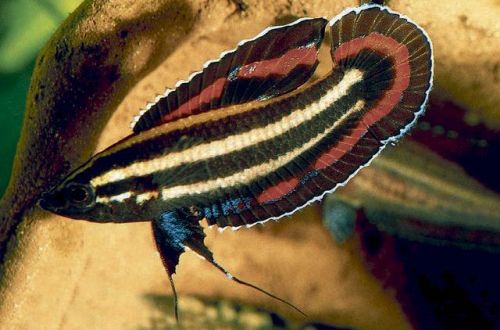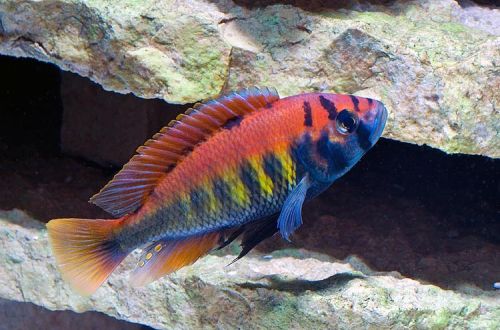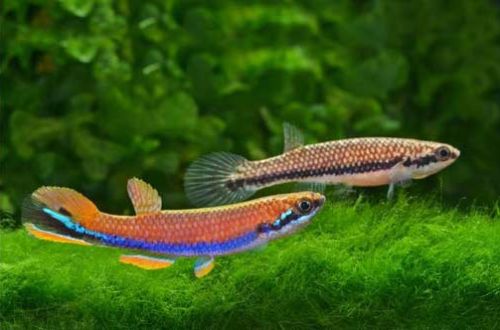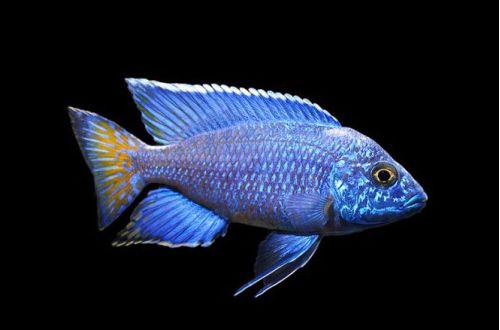
Parosfromenus Tweedy
Parosfromenus Tweedy or Kupanus Tweedy, the scientific name Parosphromenus tweediei, belongs to the Osphromenus family. The fish is named after ichthyologist Michael Tweedy, who took part in the discovery of many river species in Malaysia. This fish is considered quite difficult to keep due to the need to maintain very low pH and dGH values, which can be difficult for beginner aquarists.

Contents
Habitat
It comes from Southeast Asia from the Malay Peninsula. The natural habitat roughly coincides with the territory of the Malay state of Johor. Inhabits tropical peat swamps, hiding in the dense wilds of tropical forests. A typical biotope is a shallow reservoir, the bottom of which is covered with a thick layer of fallen plant material (leaves, branches, tree roots). The water is cloudy dark due to the high concentration of humic acids and other tannins released as a result of the decomposition of plant organic matter.
Currently, it is rarely found in the wild due to the rapid reduction of forests and the pollution of the remaining reservoirs.
Brief information:
- The volume of the aquarium – from 30 liters.
- Temperature – 22-28°C
- Value pH — 3.0–6.5
- Water hardness – 1–5 dGH
- Substrate type – any dark
- Lighting – subdued
- Brackish water – no
- Water movement – little or no
- The size of the fish is about 3 cm.
- Food – live or frozen food
- Temperament – peaceful
- Content – in a group of relatives or with other small species
Description
Adults reach a length of just over 3 cm. The striped body pattern consists of alternating black and yellow horizontal stripes. Males look more colorful due to the coloring of the fins. The dorsal, anal fins and tail have a red stripe bordered by wider black stripes, the edges are bordered with a blue line. At the anal fin, a red stripe is sometimes separated by a blue pigment. During the breeding season, the colors become more intense. Adult females do not have red and blue stripes, and the color itself looks more gray.
Food
In nature, it feeds on small invertebrates. In a home aquarium, the diet should be appropriate and consist of live or frozen brine shrimp, bloodworms, daphnia, fruit flies, mosquito larvae, etc. Dry foods are reluctant to accept, and, as a rule, cannot form the basis of a diet.
Maintenance and care, arrangement of the aquarium
The optimal size of the aquarium for one or two fish starts from 20-30 liters. When creating the design, it is important to provide several shelters or places where the fish could hide. If only natural decor is used, then the problem can be solved with the help of snags and thickets of shade-loving plants, as well as a layer of leaves of some trees. In cases where the design does not matter, any decorative items intended for use in an aquarium, or ordinary ceramic pots and vessels tilted on their side, fragments of PVC pipes, etc., are suitable as a shelter. The lighting is subdued. Additional shading can be achieved through clusters of floating plants. In general, the choice of decor is determined by the imagination of the aquarist.
Long-term maintenance of Parosfromenus Tweedy is possible only at very low values of hydrochemical parameters. In the process of water treatment, it may be necessary to install a reverse osmosis system, or use traditional methods for obtaining soft water. A positive effect on the chemical composition of water will have tree leaves, which act not only as a decoration, but also as a source of tannins, thereby recreating an environment similar to that in which fish live in nature.
The stability of the biological system of the aquarium depends on the smooth operation of the equipment, primarily filters, and the regularity of a number of mandatory maintenance procedures: weekly replacement of part of the water (10–15% of the volume) with fresh water and timely removal of organic waste (food residue, excrement).
When choosing a filtration system, it is worth giving preference to models that do not cause excessive movement of water, since Parosfromenus, living in stagnant swamps, are not accustomed to currents.
Behavior and Compatibility
Between males there is rivalry for the attention of females and territory during the spawning period. However, with enough hiding places, keeping several males in one tank is not difficult, and their competition will not go beyond a “show of strength”. Females are more calm. Good compatibility is achieved with other miniature fish that can live in similar conditions. For example, neighbors in nature are rasboras, some calm Bettas, barbs, etc.
Breeding / breeding
The probability of spawning depends entirely on the environment in which the fish live and the quality of the food supplied. In favorable conditions, reproduction occurs regularly. With the onset of the mating season, the male occupies a site at the bottom of the aquarium around some kind of shelter – the place of future masonry. Sometimes he creates a nest of air bubbles inside the cave. When the place is determined, courtship begins. The male seeks to attract one of the females to his nest, if she accepts signs of attention, spawning begins. A pair is formed only for one breeding season, the next time the partners may well change.
Females usually do not take part in caring for offspring, leaving the clutch as soon as all the eggs have been laid. The male, on the contrary, remains nearby until the fry that have appeared begin to swim freely, only then his parental instincts begin to fade. This takes about a week. Juveniles can grow up being close to their parents without fear of being eaten. But if other fish are kept together, then cases of predation cannot be avoided.
Fish diseases
A well-established biological system, a balanced diet and the absence of stressful situations (for example, being chased by aggressive fish) are the best guarantee of maintaining health. When the first signs of an illness appear, first of all, attention should be paid to these three factors, perhaps there was a deviation in one of them. As a rule, solving the problem leads to self-healing. However, if the immune system fails, you will have to resort to medical treatment. Read more about symptoms and treatments in the Aquarium Fish Diseases section.





